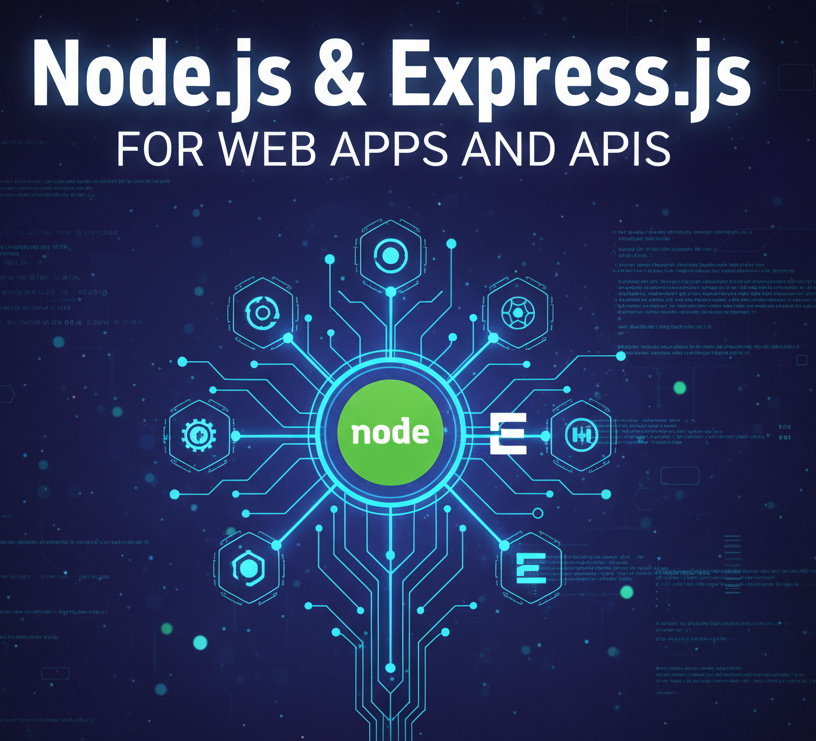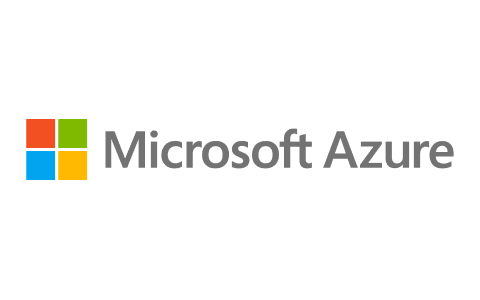- Great Learning
- Free Courses
- Cloud Computing
Earn a certificate & get recognized
Cloud Computing Service Models
Learn cloud computing service models from basics in this free online training. Cloud computing service models course is taught hands-on by experts. Learn introduction to cloud computing and benefits of cloud computing in details
Instructor:
Mr. Anirudh RaoCloud Computing Service Models
16.1K+ learners enrolled so far
Stand out with an industry-recognized certificate
10,000+ certificates claimed, get yours today!
Get noticed by top recruiters
Share on professional channels
Globally recognised
Land your dream job

Skills you will gain
Cloud Service Models
Trends in Service Models
Key Highlights
Get free course content
Master in-demand skills & tools
Test your skills with quizzes
About this course
Cloud computing is a great domain that constantly evolves with every passing day. It should come as no surprise that the future of computing lies in the cloud. There are types of Cloud Computing models used today, and the most important ones are IaaS, PaaS, and SaaS. Each of these service models satisfies a unique set of business requirements. The business can leverage the broader possibilities of each service model to experience flexibility and efficiency in business growth. This course aims to introduce Cloud Computing Service Models and their benefits. The course will also make you familiar with cloud computing trends, the famous service model, and the future of Cloud Computing.
Become a certified Cloud Computing professional with our Cloud Computing Course powered by AWS Educate. Practice what you learn by working on 15+ use cases. Explore our best cloud computing courses today.
Course outline
Introduction to Cloud Computing
This module starts with helping you understand what Cloud Computing is and go through various cloud models like public, private, and hybrid clouds.
Trends and Benefits of Cloud Computing
Explore the latest trends and advantages of cloud computing in this module.
Cloud Computing Services
Dive into the various cloud service offerings and their significance in the modern IT landscape.
Popular Service Model and future of Cloud Computing
Understand the current service models and what lies ahead in the future of cloud computing.
Get access to the complete curriculum once you enroll in the course
Stand out with an industry-recognized certificate
10,000+ certificates claimed, get yours today!
Get noticed by top recruiters
Share on professional channels
Globally recognised
Land your dream job

Cloud Computing Service Models

1.5 Hours
Beginner
16.1K+ learners enrolled so far
Get free course content
Master in-demand skills & tools
Test your skills with quizzes
Refer and earn
Get learning discounts up to $20
Learner reviews of the Free Courses

5.0

5.0
Our course instructor

Mr. Anirudh Rao
Cloud Computing Expert
Frequently Asked Questions
Will I receive a certificate upon completing this free course?
Is this course free?
What are the cloud service models?
Cloud service models enable ubiquitous and convenient access to the users with the help of a shared pool of resources. There are different types of cloud computing service models that fulfill a broad range of unique user requirements with minimal effort. These three models include Software-as-a-Service or SaaS, Infrastructure-a-sa-Service or IaaS, and Platforms-as-a-Service or PaaS.
What are the 3 main service models of cloud computing?
The three cloud computing service models that fulfill various business requirements include :
-
SaaS : SaaS is an acronym for Software as a Service. This typically includes applications or software that are hosted by a software service provider and can be accessed over the internet using a web browser. Some popular examples include Salesforce, Google Apps, WebEx, ZenDesk, and Slack. Being managed from a central location, it is easily accessible to the users over the internet. This makes it an easy and affordable option for organizations without having to update it or keep it running.
-
IaaS : IaaS is an acronym for Infrastructure as a service. It is also managed over the internet and offers an affordable solution for organizations to acquire computing capabilities. It also helps organizations avoid the complexity involved in the management of physical servers. Services within IaaS are scalable and flexible. Some popular examples include Microsoft Azure, Amazon Web Services (AWS), Cisco Metacloud, and Google Compute Engine (GCE).
-
PaaS : PaaS is an acronym for Platforms as a Service. It exists halfway between SaaS and IaaS that allows programmers to develop, test, and run various applications. By offering access to a cloud-based platform, PaaS lets users customize and manage various features of applications in an affordable manner. It has the ability to support various languages and is easily scalable. Some examples include Windows Azure, Google App Engine, Magento Commerce Cloud, and AWS Elastic Beanstalk.
What are the 4 types of cloud computing?
Most organizations have adopted cloud computing using cloud service models. The four main types of cloud computing include -
-
Public Cloud : In the public cloud, cloud services are offered and owned by IT infrastructure, which is open to use for the public. It typically involves cloud hosting, where the cloud service provider will offer infrastructure or services to the users. It is ideal for businesses that require application management which is, in turn, accessed by many users. It is a very economical option for small organizations.
-
Private Cloud: Also known as Internal Clouds, these cloud environments offer services to cater to a single end-user or group. The user gets direct control of the services in the private cloud with underlying IT infrastructure belonging to a particular organization. Private clouds include managed private clouds and dedicated clouds depending on the requirements.
-
Hybrid Cloud: A hybrid cloud integrates both public and private clouds with resources offered by either internal or external providers. The characteristics of hybrid clouds may vary depending on the requirements of an organization. It typically consists of an IT environment created using LANs, WANs, and private networks.
-
Community Cloud or Multi-Cloud : In a community cloud, the cloud environment involves more than one cloud computing approach, which may be shared by different organizations such as banks and trading companies. It can be managed internally as well as externally.
What are the different types of service models?
Different types of service models are enlisted below :
-
Infrastructure as a Service (IaaS)
-
Platform as a Service (PaaS)
-
Software as a Service (SaaS)
-
Storage as a Service (SaaS)
-
Communications as a Service (CaaS)
-
Network as a Service (NaaS)
-
Monitoring as a Service (MaaS)
Is IaaS a cloud?
Yes, IaaS or Infrastructure as a Service corresponds to a cloud-based computing infrastructure facility or service that can be accessed over the internet using a web browser. The service provider will host the infrastructure on behalf of its clients, such as physical or virtual servers.
Is Google Docs related to cloud computing?
Yes, Google Docs is a type of cloud computing service or a form of Software as a Service (SaaS).
What are the three advantages of cloud computing?
Cloud computing offers numerous advantages to organizations of all sizes - big or small. The three key advantages of cloud computing include :
-
Reduced costs of operations - Cloud computing reduces excess costs of IT infrastructure and operations for organizations. There are no costs involved for system upgrades, maintenance, energy consumption, and resources. Additionally, it offers no time delays.
-
Efficiency -Cloud computing allows businesses to improve efficiency and communicate easily without relying on traditional methods. This makes it easier to communicate across different locations throughout the globe without any downtime.
-
Scalability - It offers businesses the flexibility to scale up and down depending on the changing requirements. Using the cloud environment frees organizations of unwanted pressure to invest in the infrastructure or experience time delays in upgrading the systems.
What is a private cloud example?
Private clouds offer cloud computing services to an internal network of an organization. Some examples include Ubuntu, Microsoft, HP Data Centers, and Elastra-private cloud.
Become a Skilled Professional with Pro Courses
Gain work-ready skills with guided projects, top faculty and AI tools, all at an affordable price.


View Course

Included with Pro+ Subscription

View Course

Included with Pro+ Subscription
.jpg)
View Course

Included with Pro+ Subscription


View Course

Included with Pro+ Subscription


View Course

Included with Pro+ Subscription

View Course

Included with Pro+ Subscription

View Course

Included with Pro+ Subscription

View Course

Included with Pro+ Subscription


View Course

Included with Pro+ Subscription




View Course

Included with Pro+ Subscription


View Course

Included with Pro+ Subscription


View Course

Included with Pro+ Subscription


View Course

Included with Pro+ Subscription
.png)


View Course

Included with Pro+ Subscription


View Course

Included with Pro+ Subscription


View Course

Included with Pro+ Subscription


View Course

Included with Pro+ Subscription


View Course

Included with Pro+ Subscription
.png)

View Course

Included with Pro+ Subscription
.jpg)



View Course

Included with Pro+ Subscription

View Course

Included with Pro+ Subscription
.png)
View Course

Included with Pro+ Subscription
.png)
View Course

Included with Pro+ Subscription
.png)
View Course

Included with Pro+ Subscription

View Course

Included with Pro+ Subscription

View Course

Included with Pro+ Subscription

View Course

Included with Pro+ Subscription

View Course

Included with Pro+ Subscription

View Course

Included with Pro+ Subscription
.png)
View Course

Included with Pro+ Subscription
.jpg)
View Course

Included with Pro+ Subscription

View Course

Included with Pro+ Subscription


View Course

Included with Pro+ Subscription




View Course

Included with Pro+ Subscription

View Course

Included with Pro+ Subscription

View Course

Included with Pro+ Subscription
.jpg)
View Course

Included with Pro+ Subscription

View Course

Included with Pro+ Subscription

View Course

Included with Pro+ Subscription
.png)
View Course

Included with Pro+ Subscription

View Course

Included with Pro+ Subscription

View Course

Included with Pro+ Subscription

View Course

Included with Pro+ Subscription

View Course

Included with Pro+ Subscription
.jpg)
View Course

Included with Pro+ Subscription
.jpg)
View Course

Included with Pro+ Subscription
.jpeg)
View Course

Included with Pro+ Subscription
.jpg)
View Course

Included with Pro+ Subscription

View Course

Included with Pro+ Subscription

View Course

Included with Pro+ Subscription

View Course

Included with Pro+ Subscription


View Course

Included with Pro+ Subscription
.png)
View Course

Included with Pro+ Subscription

View Course

Included with Pro+ Subscription
Popular


View Course

Included with Pro+ Subscription

View Course

Included with Pro+ Subscription
.jpg)
View Course

Included with Pro+ Subscription


View Course

Included with Pro+ Subscription


View Course

Included with Pro+ Subscription

View Course

Included with Pro+ Subscription

View Course

Included with Pro+ Subscription

View Course

Included with Pro+ Subscription
Microsoft Courses


View Course

Included with Pro+ Subscription




View Course

Included with Pro+ Subscription


View Course

Included with Pro+ Subscription


View Course

Included with Pro+ Subscription


View Course

Included with Pro+ Subscription
Cloud Computing
.png)


View Course

Included with Pro+ Subscription


View Course

Included with Pro+ Subscription


View Course

Included with Pro+ Subscription


View Course

Included with Pro+ Subscription


View Course

Included with Pro+ Subscription
.png)

View Course

Included with Pro+ Subscription
.jpg)




.jpg)

.png)
View Course

Included with Pro+ Subscription


.png)

View Course

Included with Pro+ Subscription
Cyber Security

View Course

Included with Pro+ Subscription

View Course

Included with Pro+ Subscription
.png)
View Course

Included with Pro+ Subscription
.png)
View Course

Included with Pro+ Subscription
.png)
View Course

Included with Pro+ Subscription
IT & Software

View Course

Included with Pro+ Subscription

View Course

Included with Pro+ Subscription

View Course

Included with Pro+ Subscription

View Course

Included with Pro+ Subscription

View Course

Included with Pro+ Subscription
.png)
View Course

Included with Pro+ Subscription
.jpg)
View Course

Included with Pro+ Subscription

View Course

Included with Pro+ Subscription


View Course

Included with Pro+ Subscription
 (1).png)
View Course

Included with Pro+ Subscription


View Course

Included with Pro+ Subscription

View Course

Included with Pro+ Subscription


View Course

Included with Pro+ Subscription

View Course

Included with Pro+ Subscription

View Course

Included with Pro+ Subscription
.png)
View Course

Included with Pro+ Subscription
.png)
View Course

Included with Pro+ Subscription

View Course

Included with Pro+ Subscription

View Course

Included with Pro+ Subscription

View Course

Included with Pro+ Subscription

View Course

Included with Pro+ Subscription

View Course

Included with Pro+ Subscription
AI & Generative AI




View Course

Included with Pro+ Subscription

View Course

Included with Pro+ Subscription

View Course

Included with Pro+ Subscription
.jpg)
View Course

Included with Pro+ Subscription

View Course

Included with Pro+ Subscription

View Course

Included with Pro+ Subscription
Management
.png)
View Course

Included with Pro+ Subscription

View Course

Included with Pro+ Subscription

View Course

Included with Pro+ Subscription

View Course

Included with Pro+ Subscription

View Course

Included with Pro+ Subscription
.jpg)
View Course

Included with Pro+ Subscription
.jpg)
View Course

Included with Pro+ Subscription
.jpeg)
View Course

Included with Pro+ Subscription
.jpg)
View Course

Included with Pro+ Subscription
.png)
View Course

Included with Pro+ Subscription
.png)
View Course

Included with Pro+ Subscription
.png)
View Course

Included with Pro+ Subscription
 (1).jpg)
View Course

Included with Pro+ Subscription

View Course

Included with Pro+ Subscription
.png)
View Course

Included with Pro+ Subscription
.png)
View Course

Included with Pro+ Subscription
Data Science & ML

View Course

Included with Pro+ Subscription

View Course

Included with Pro+ Subscription

View Course

Included with Pro+ Subscription


View Course

Included with Pro+ Subscription
.png)
View Course

Included with Pro+ Subscription

View Course

Included with Pro+ Subscription
Subscribe to Academy Pro+ & get exclusive features
$25/month
No credit card required

Learn from 40+ Pro courses

Access 500+ certificates for free

700+ Practice exercises & guided projects

Prep with AI mock interviews & resume builder
Recommended Free Cloud Computing courses

.jpg)




Similar courses you might like




.jpg)

Related Cloud Computing Courses
-
Personalized Recommendations
Placement assistance
Personalized mentorship
Detailed curriculum
Learn from world-class faculties
50% Average salary hike -


McCombs School of Business at The University of Texas at Austin
PG Program in Cloud Computing: Leveraging GenAI6 months · Online · Weekend
360° Cloud LearningKnow More
-


Microsoft Azure
AZ-104 - Microsoft Azure Administrator Training Course6 Weeks · Online
Know More
-


Great Lakes Institute of Management
Post Graduate Program in Cloud Computing8 months · Online
360° Cloud LearningKnow More












